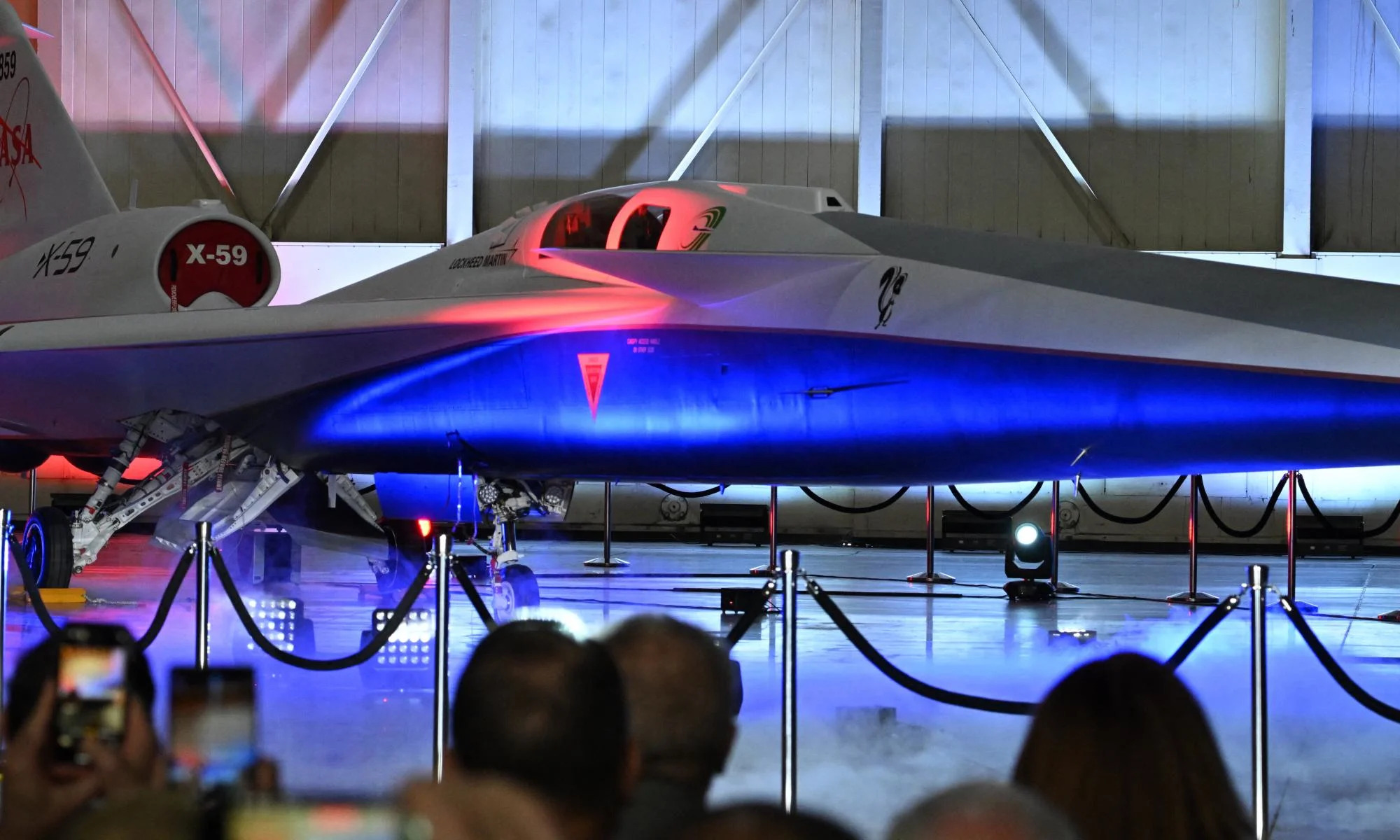X-59 'Quiet supersonic' jet from NASA and Lockheed finally rolls out

NASA and Lockheed Martin have finally taken the wraps off of the X-59, a "quiet supersonic" aircraft that may shape the future of both military and civilian air travel.
The X-59 has been under development at Lockheed Martin Skunk Works for years, following a $248 million grant from NASA in 2018. That was just the first of many research programs NASA aimed to fund in order to take bold steps forward in aviation, either in speed, efficiency or size.
Until now the aircraft has only been seen in various stages of disassembly in the hangar; today marks the first time it's been out on the tarmac in public view, and of course they made quite a to-do over at Lockheed's Palmdale facility.
"In just a few short years we’ve gone from an ambitious concept to reality. NASA’s X-59 will help change the way we travel, bringing us closer together in much less time," said Pam Melroy, NASA deputy administrator, in a press release. (A press call is scheduled for later today, and this article may soon be updated to reflect remarks made therein.)
The X-59 is an experimental aircraft, not a prototype of a production craft. The intent is to demonstrate that a plane can fly faster than the speed of sound — in this case, 925 MPH — without generating the window-rattling sonic boom that results from the resulting pressure wave.
Though it's impossible to entirely mitigate the effect of a large body moving through the atmosphere at great speed, the team aims to reduce the boom to a "sonic thump" that's less disruptive to people, infrastructure and wildlife.

Schlieren image of a model X-59 producing a diffuse pressure wave at Mach speed. Image Credits: NASA
"By demonstrating the possibility of quiet commercial supersonic travel over land, we seek to open new commercial markets for U.S. companies and benefit travelers around the world," said NASA's Bob Pearce.
It accomplishes this more or less by its incredibly aerodynamic shape: Nearly 100 feet long and only 29.5 feet wide, it has a dartlike profile that is carefully engineered to break up the shock waves coming off it in flight.
An interesting consequence of this shape is that having a forward-facing window in the cockpit is impractical — it, like the nosecone, would need to be highly attenuated. So the team instead mounted a 4K screen they call the eXternal Visibility System, or XVS, which relays images from the front in real time.
NASA’s X-59 supersonic jet will have a 4K TV instead of a forward window
The plane has not yet taken off, for there are many more tests before that can happen. But now that they've got weight on wheels, they can move on to "integrated systems testing, engine runs, and taxi testing" ahead of its first flight, tentatively scheduled for "later this year." A subsonic flight is planned, then more tests, then the crucial first supersonic flight.
Others than NASA and Lockheed are interested in this kind of flight, of course: Boom Supersonic is hard at work getting its own quiet supersonic test plane out there. Just don't expect to hear any sonic thumps overhead any time soon — the technology is promising for many reasons, but still years away from general use.
- Questions and Answers
- Opinion
- Story/Motivational/Inspiring
- Technology
- Art
- Causes
- Crafts
- Dance
- Drinks
- Film/Movie
- Fitness
- Food
- Jogos
- Gardening
- Health
- Início
- Literature
- Music
- Networking
- Outro
- Party
- Religion
- Shopping
- Sports
- Theater
- Wellness
- News
- Culture
- War machines and policy


